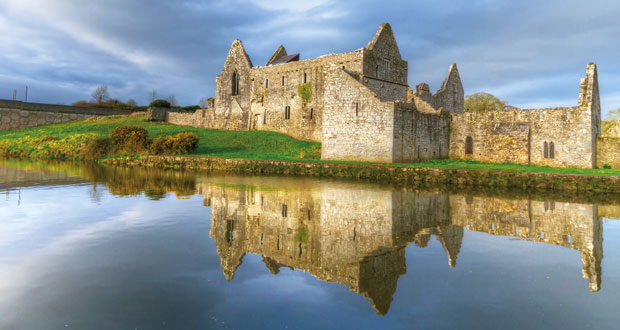Bruce Donald, UK and Ireland Sales Manager at SimonsVoss, discusses the benefits modern, non-invasive access solutions can offer heritage sites and the part they play in securing historic environments
In the intricate world of heritage site management, facility managers face an increasingly complex challenge: how to secure these historical architectural treasures in an era of evolving security threats, all without compromising the aesthetic integrity that makes these sites so unique?
The stakes have never been higher. The British Museum alone saw nearly 6.5. million visitors last year, and with UK heritage attractions welcoming an increase of 11 per cent in visitor numbers throughout 2023 – a significant rebound from pandemic-era closures – the demand for intelligent, sensitive security solutions has become paramount.
MULTIFACETED SECURITY CHALLENGES
Heritage sites exist in a delicate ecosystem of preservation and protection. Unlike standard commercial or public spaces, these cultural landmarks must simultaneously welcome visitors, protect priceless artifacts, and maintain their historical authenticity. The security challenges are often as complex as the buildings themselves.
Protecting valuable artifacts represents more than simply preventing theft. Museums and historical sites house irreplaceable cultural heritage, yet, these sites must remain accessible, creating a security requirement that demands nuanced, intelligent solutions.
Historical structures present their own unique security challenges, too. Many heritage sites are housed in centuries-old buildings – fragile, intricate environments where even minor interventions can cause irreparable damage. Traditional security systems with invasive wiring, bulky hardware, or destructive installation methods are simply not an option.
Public access adds another layer of complexity. Heritage sites must manage diverse visitor flows while maintaining strict control over sensitive areas. Researchers, volunteers, staff, contractors, and tourists all require different levels of access. A robust and secure access control system must distinguish between public spaces, staff-only zones, and critical storage areas – all without diminishing a site’s welcoming nature.
PRESERVATION-FRIENDLY DIGITAL TRANSFORMATION
Modern digital access control systems offer a solution that addresses these challenges. Wireless, battery-powered technologies provide security without physical intervention and intelligent credential management allows for granular access control, creating a sophisticated security environment that adapts to each site’s unique requirements.
These systems also deliver unprecedented flexibility. Time-limited credentials can be issued for temporary researchers or special events. Lost access cards can be instantly deactivated. Comprehensive audit trails provide complete accountability, satisfying both security protocols and regulatory requirements.
Below are some key takeaways for heritage site facility managers looking to modernise access control:
- Prioritise non-invasive, reversible security solutions such as wireless or battery-operated systems that avoid damaging historical structures as well as hardware that blends seamlessly with the site’s aesthetic and architecture.
- Invest in systems offering granular access control with the ability to define access levels for different user groups (e.g., staff, volunteers, contractors, visitors) and restrict access to sensitive areas (e.g., archives, storage rooms, exhibit spaces).
- Consider systems that offer detailed logs of access events to track and review who accessed specific areas and when.
- Remote management is crucial as it brings centralised control of access permissions across multiple buildings or sites and the ability to update or revoke access credentials remotely.
- Don’t overlook emergency features and systems that automatically unlock doors during emergencies (e.g., fire alarms) to allow safe evacuation and lockdown capabilities to secure areas during security threats.
- Consider long-term operational efficiency and scalability with modular systems that can grow with the site’s needs.
- GDPR compliance is crucial, including the cure handling of personal data collected for access control purposes and transparent policies for data collection and usage.
As visitor numbers continue to rise and security threats evolve, heritage sites must remain adaptable. Digital access control represents more than a technological upgrade – it’s a strategic approach to preserving cultural assets while maintaining their accessibility and relevance.





